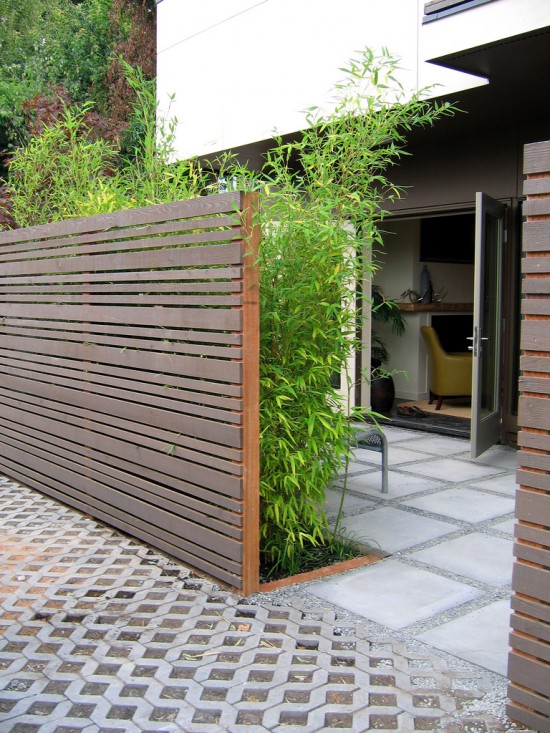Featured

Your fencing is an important part of your residential or commercial property, offering safety and security, visual, and privacy appeal. It is continuously subjected to the elements, and over time, weather-related damage can take its toll. Whether it's the rough sun, solid winds, hefty rainfall, or freezing temperatures, the weather condition can trigger degeneration, bending, decomposing, and fading. Thankfully, there are numerous methods you can apply to secure your fence and extend its life.
- Choose the Right Material. The very first step in protecting your fencing from weather-related damage is to pick the appropriate product for your environment. Some products are a lot more immune to the aspects than others.
Wooden Fences: While typical wood fences provide a natural, attractive look, they are particularly prone to water bug, damage, and rot problem. Such as cedar or redwood if you choose timber, pick pressure-treated lumber or wood kinds that are much more resistant to dampness. Vinyl Fencings: Vinyl is a low-maintenance choice that resists fading, splitting, and bending. It's likewise unsusceptible to rot and bugs, making it suitable for locations with high moisture or exposure to rainfall. Steel Fences: Aluminum and wrought iron fencings are long lasting and immune to weathering. However, they can corrosion if exposed to moisture for extended durations. Select a galvanized or powder-coated steel fencing to lower the danger of corrosion. Composite Fences: These are made from a mix of wood fibers and plastic, offering the finest of both globes-- resilience and a natural appearance. Compound fencings are immune to wetness, fading, and decomposing, making them fantastic for climates with regular rain or snow. 2. Apply Safety Coatings. Regardless of the product, using a protective covering can aid secure your fence from weather condition damages.

Wood Fences: A good-quality tarnish or sealant can aid secure your wood fence from moisture, UV rays, and insects. These finishes produce a barrier that protects against water from permeating right into the timber and triggering rot. You need to apply a fresh layer of tarnish or sealer every couple of years, depending upon your environment and the level of exposure to rain and sunlight. Vinyl Fences: Although vinyl fences are usually resistant to weathering, they can still struggle with discoloration because of the sun's UV rays. You can use specialized plastic cleansers or UV protectants to maintain the color and appearance of your fence. Steel Fencings: For steel fencings, think about applying a rust-resistant guide and a layer of paint made for outside use. Powder finish is one more superb alternative for metal fencings, as it develops a durable, weather-resistant surface that resists rust and rust. 3. Routine Cleaning and Maintenance. Maintaining your fencing routinely is vital to avoiding damage from the components. Dust, leaves, and other debris can construct up on your fencing, which can trigger discoloration, mold, and mildew with time.
Wood Fences: Tidy your wooden fencing every 6 months with a light cleaning agent remedy or a pressure washing machine (on a low setting) to eliminate dirt and crud. Keep an eye out for early signs of rot, specifically at the base of the fence posts where wetness tends to collect. Vinyl Fences: Plastic fences are simple to tidy with soap and water. Make use of a mix of vinegar and water to carefully scrub the influenced areas if you observe mold and mildew or mildew. Avoid extreme chemicals that might harm the surface. Steel Fences: Frequently clean steel fencings with a soft towel or sponge to remove rust-causing debris. For wrought iron fences, think about applying a rust-inhibiting product to avoid corrosion. 4. Appropriate Installation and Positioning. Proper installment of your fencing can go a lengthy way in safeguarding it from weather-related damage. Make sure that your fence is safely anchored and that blog posts are established deep sufficient right into the ground to avoid shifting throughout hefty winds or tornados. If your fence is subject to hefty winds, mounting bracing at bottom lines can supply added support.
Furthermore, take into consideration the positioning of your fence. Plant bushes or trees strategically around your fencing to provide some all-natural protection from harsh winds, extreme sunshine, or driving rainfall if feasible. Be careful not to plant also close to the fencing, as origins can damage or shift posts over time.
- Address Storm Damages Swiftly. Tornados, particularly those with high winds or hail, can create instant damages to your fence. After a storm, evaluate your fence for damaged sections, leaning posts, or fallen debris. Resolving damages quickly can stop additional concerns down the line. If you see small damage, such as tiny splits or loosened up panels, fix them right away to avoid water from permeating in and triggering extra substantial damage.
- Winterize Your Fence. Cold temperature levels and ice can be especially harming to wood fences. It can create the material to break or split when water gets in the wood and freezes. To avoid this, see to it that the base of your fence articles is elevated and not sitting in pooled water. In regions that experience freezing temperatures, you may intend to set up a wetness barrier around the base of the posts to reduce the risk of water damage.
Verdict. Weather-related damage is an inevitable part of possessing a fencing, yet with the appropriate safety measures and regular maintenance, you can significantly prolong the life of your fence. Choose durable materials matched for your climate, apply protective finishes, clean regularly, and make certain appropriate installment. With these actions, you can secure your fencing from the components and preserve its look and functionality for years to come.
Latest Posts
Cost Effective Deluxe: Discover the Advantages of Laminate Flooring
Published Apr 19, 25
1 min read
Digging In at Deauville Inn
Published Apr 19, 25
1 min read
Improve Your Hyundai Possession with Ron Marhofer Hyundai's Unique Programs
Published Apr 19, 25
1 min read